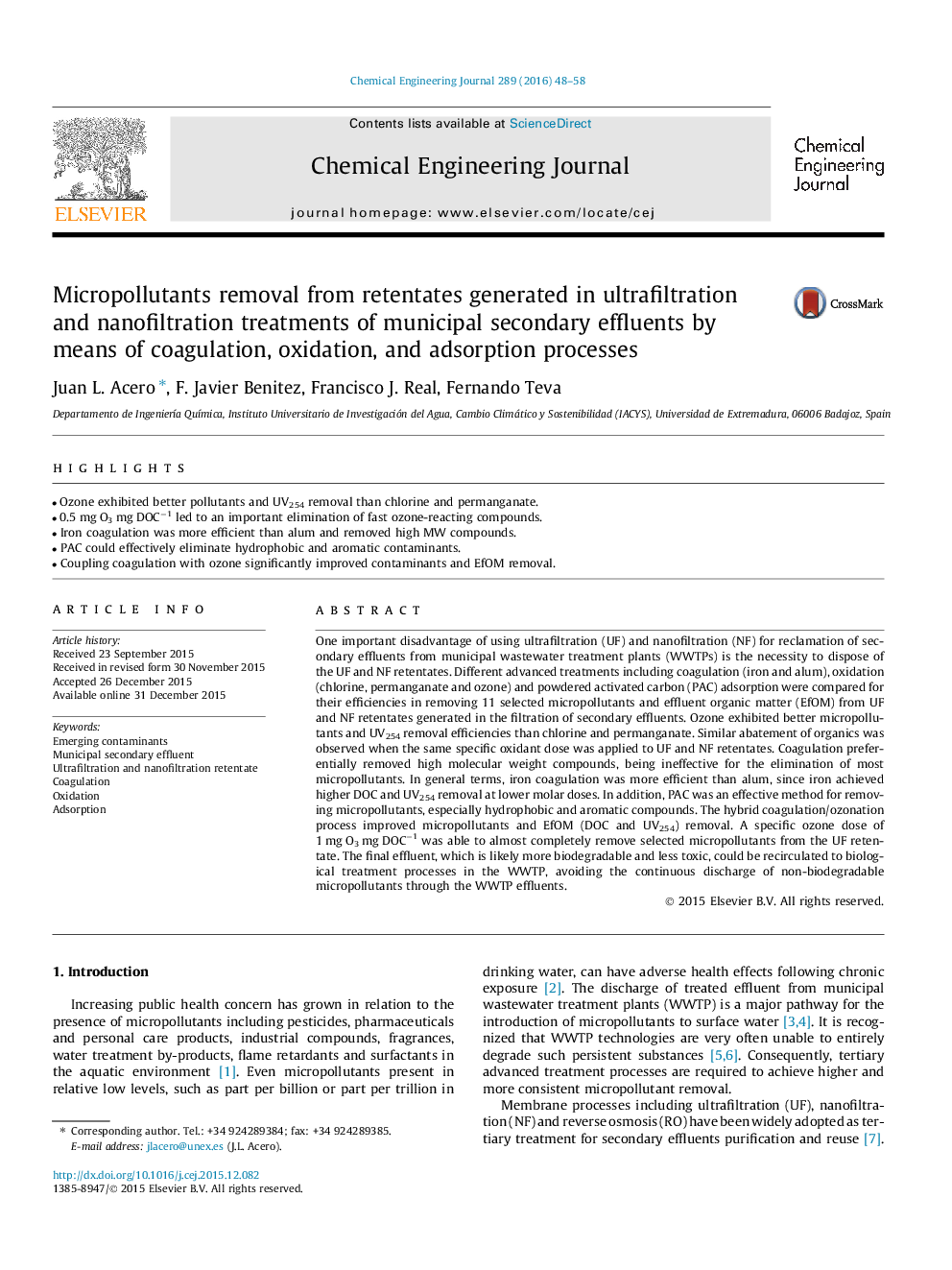| کد مقاله | کد نشریه | سال انتشار | مقاله انگلیسی | نسخه تمام متن |
|---|---|---|---|---|
| 145808 | 456352 | 2016 | 11 صفحه PDF | دانلود رایگان |
• Ozone exhibited better pollutants and UV254 removal than chlorine and permanganate.
• 0.5 mg O3 mg DOC−1 led to an important elimination of fast ozone-reacting compounds.
• Iron coagulation was more efficient than alum and removed high MW compounds.
• PAC could effectively eliminate hydrophobic and aromatic contaminants.
• Coupling coagulation with ozone significantly improved contaminants and EfOM removal.
One important disadvantage of using ultrafiltration (UF) and nanofiltration (NF) for reclamation of secondary effluents from municipal wastewater treatment plants (WWTPs) is the necessity to dispose of the UF and NF retentates. Different advanced treatments including coagulation (iron and alum), oxidation (chlorine, permanganate and ozone) and powdered activated carbon (PAC) adsorption were compared for their efficiencies in removing 11 selected micropollutants and effluent organic matter (EfOM) from UF and NF retentates generated in the filtration of secondary effluents. Ozone exhibited better micropollutants and UV254 removal efficiencies than chlorine and permanganate. Similar abatement of organics was observed when the same specific oxidant dose was applied to UF and NF retentates. Coagulation preferentially removed high molecular weight compounds, being ineffective for the elimination of most micropollutants. In general terms, iron coagulation was more efficient than alum, since iron achieved higher DOC and UV254 removal at lower molar doses. In addition, PAC was an effective method for removing micropollutants, especially hydrophobic and aromatic compounds. The hybrid coagulation/ozonation process improved micropollutants and EfOM (DOC and UV254) removal. A specific ozone dose of 1 mg O3 mg DOC−1 was able to almost completely remove selected micropollutants from the UF retentate. The final effluent, which is likely more biodegradable and less toxic, could be recirculated to biological treatment processes in the WWTP, avoiding the continuous discharge of non-biodegradable micropollutants through the WWTP effluents.
Journal: Chemical Engineering Journal - Volume 289, 1 April 2016, Pages 48–58
